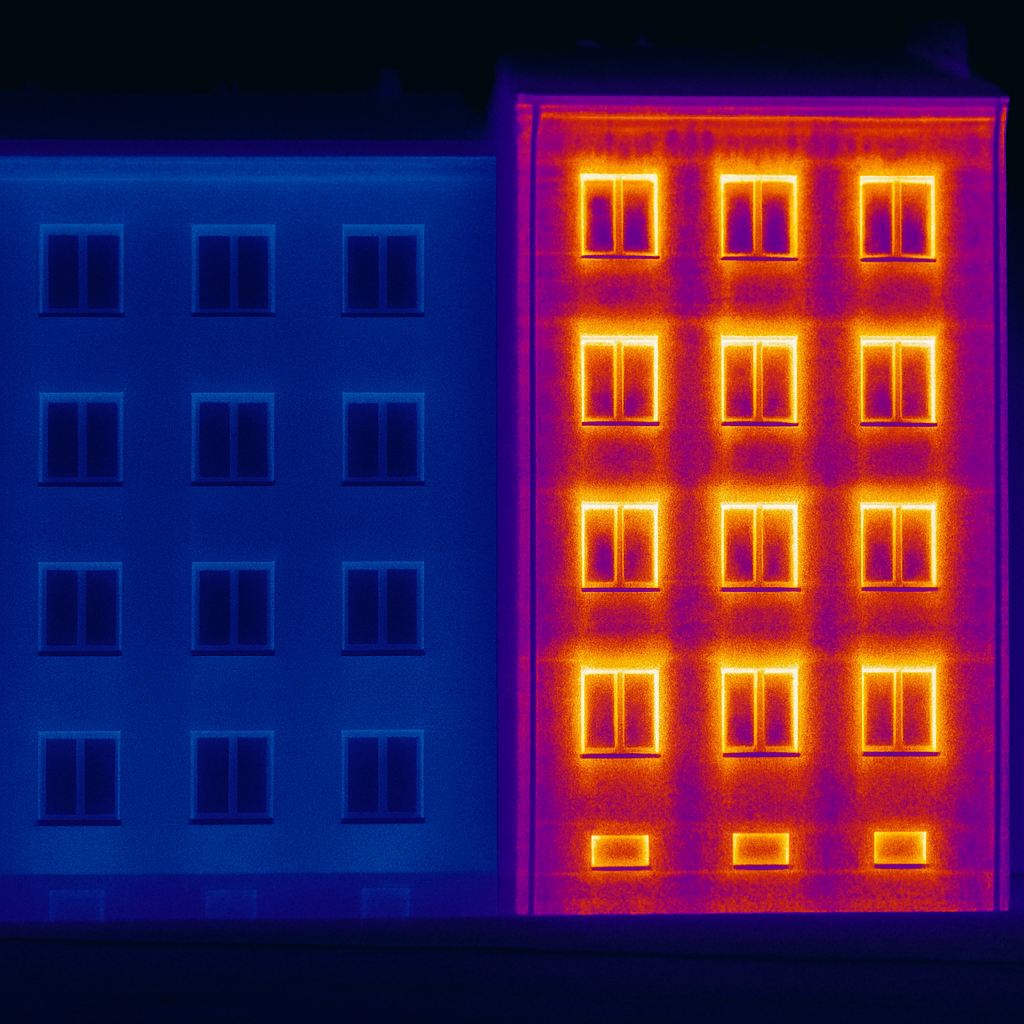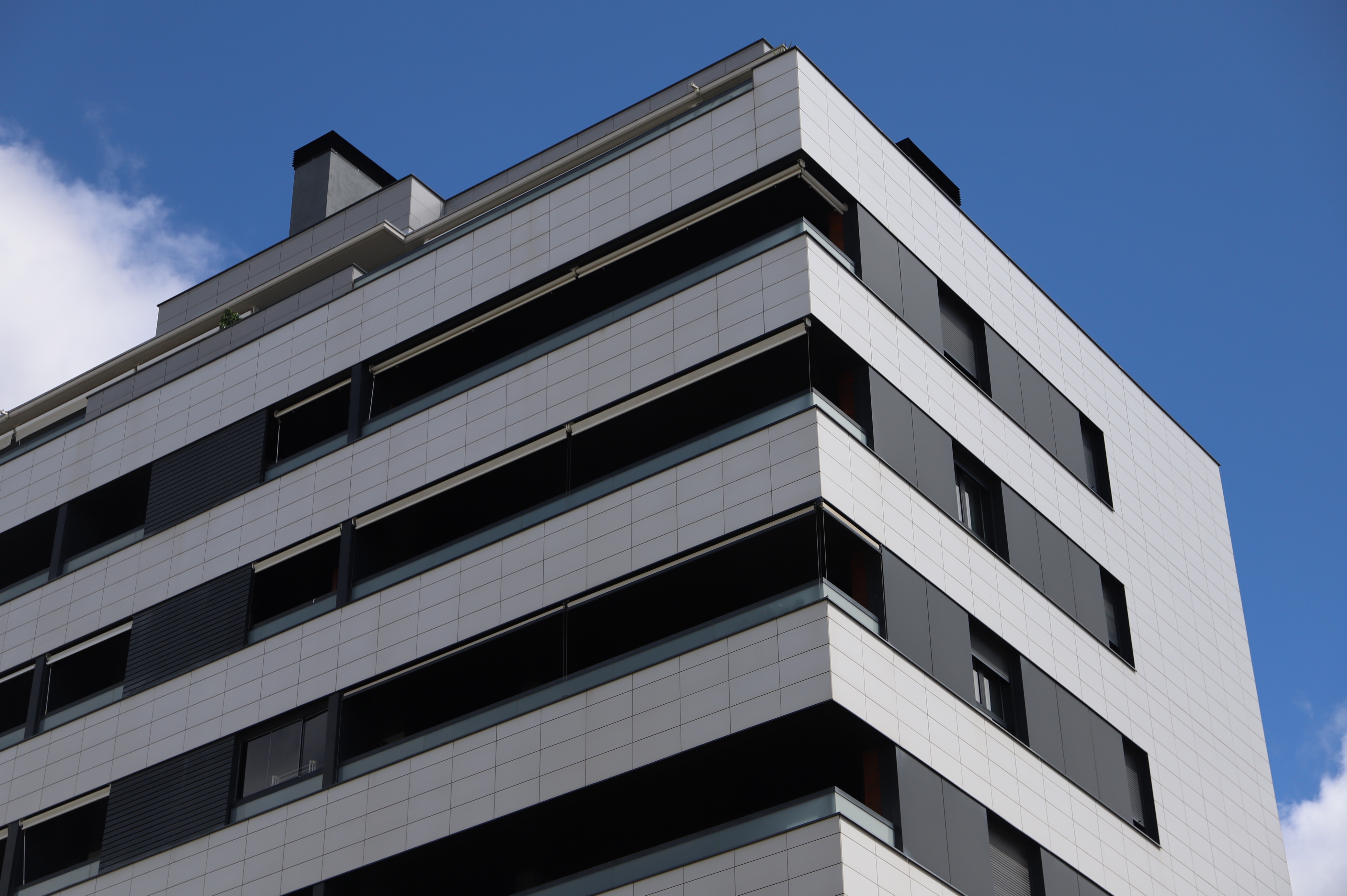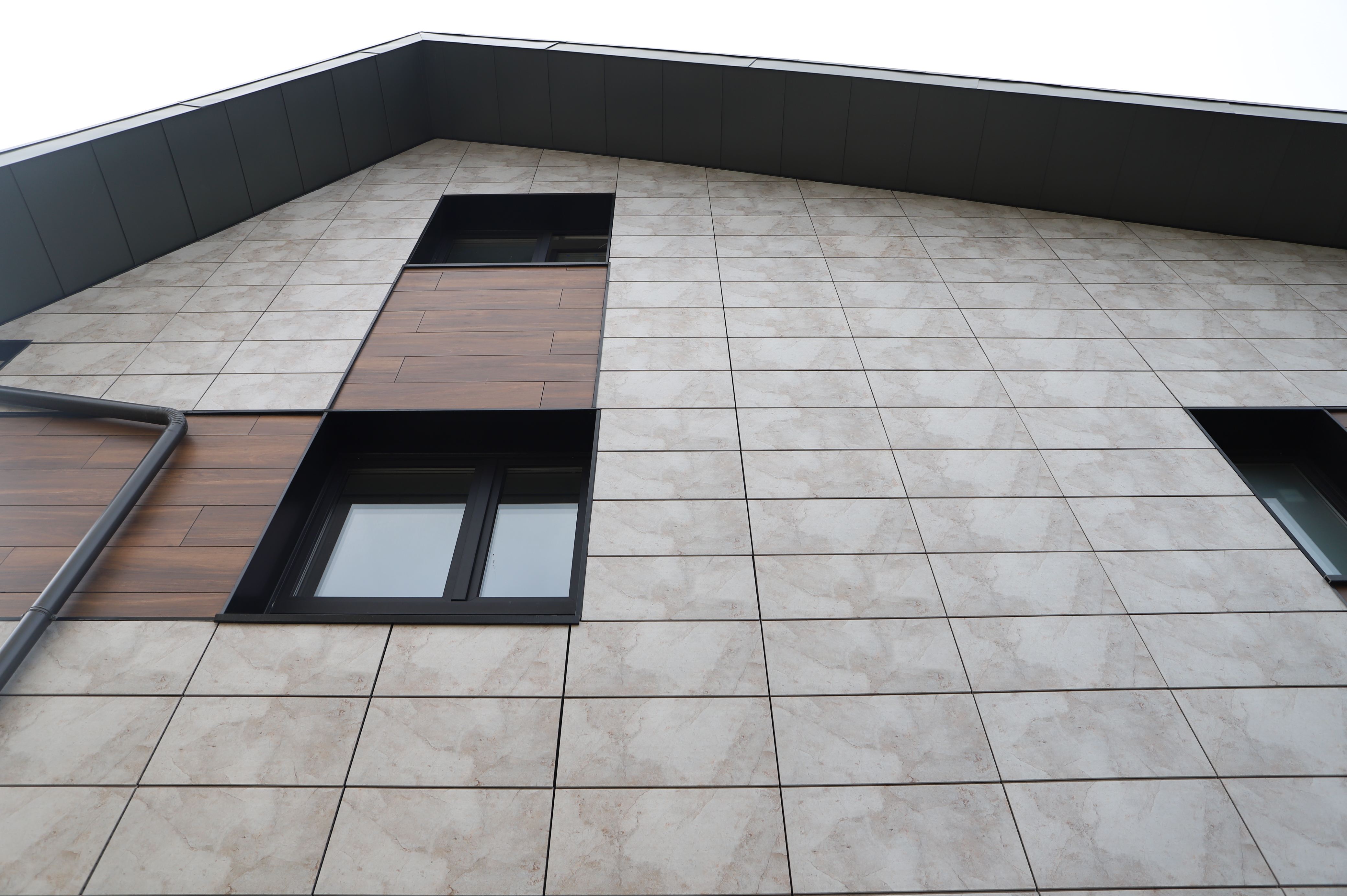
Why choose porcelain tile for ventilated facade cladding?
When it comes to contemporary architecture, there’s much more to choosing outdoor cladding than just esthetics: it directly influences the thermal behavior, durability of the building and its integration with the environment. In this context, porcelain tile for outdoor facades has become known as a material that combines resistance, versatility and design. If you’re looking for an innovative, efficient and high-performance solution for your next ventilated facade, porcelain tile is worth your attention.
What is porcelain tile?
Porcelain tile is a type of advanced, high-performing ceramic which is used in both architecture and construction projects, as well as interior design projects.
How is porcelain tile produced?
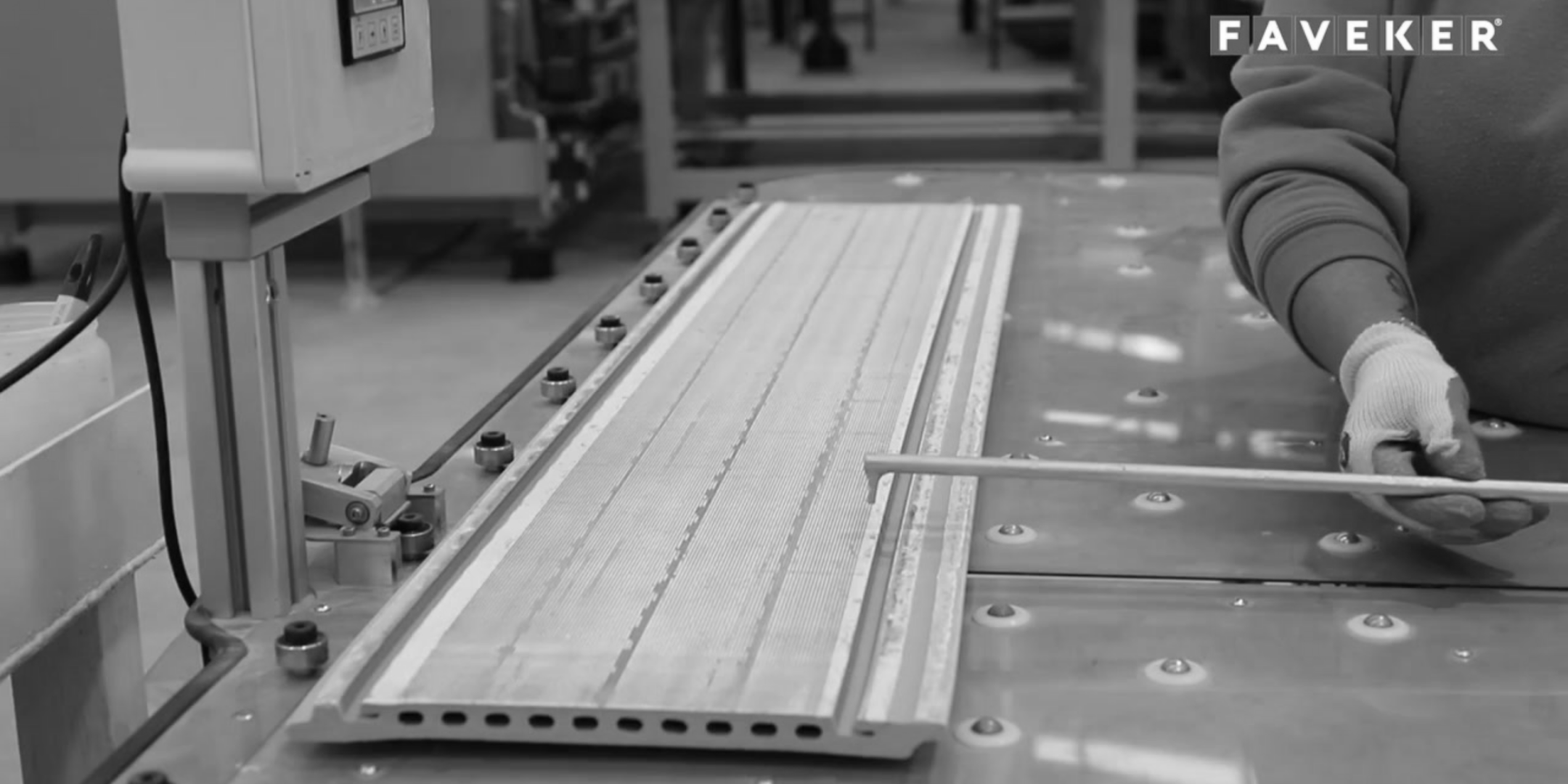
The porcelain tile production process starts off with the selection of high-quality raw materials, a combination of natural clays, feldspar, kaolin and siliceous sands, which are ground into a fine powder in order to move on to the next process:
- The extrusion of the ceramic mix to form compact panels.
- Baking at temperatures higher than 1200°C.
- Additional treatments, and the application of textures, patterns, designs, etc.
A combination of technology and precision throughout the process turns the porcelain tile into a material that’s hard, dense and resistant.
What’s the difference between porcelain tile and other materials used on facades?
The big difference with respect to other materials lies in its capacity to repel water: porcelain tile has near-zero water absorption (less than 0.5%). This means it’s highly resistant to moisture. This impermeability makes it a favorite for outdoor projects. A phenomenon known as vitrification occurs when porcelain tile is baking, which gives it that characteristic resistance and low porosity.
Porcelain tile also stands out against other materials used on facades, such as concrete, natural stone and wood due to its low maintenance. While natural stone requires periodic treatments to maintain its look, porcelain tile needs no special care. The surface repels dirt and is easy to clean.
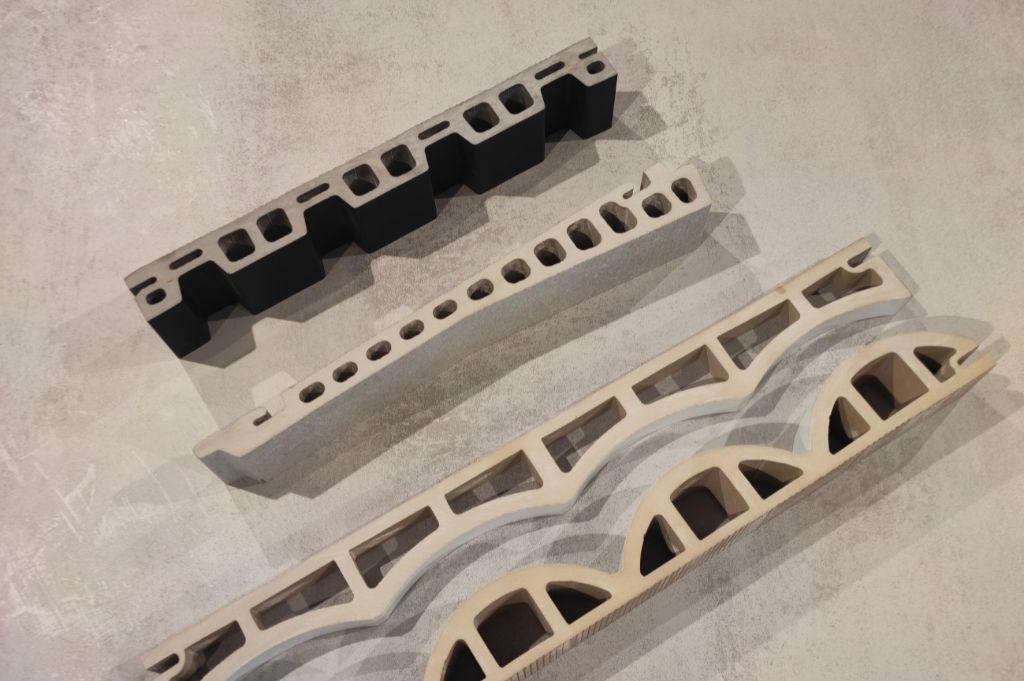
Why choose porcelain tile for outdoor facades? 7 technical reasons
The characteristic of porcelain tile that determines its zero water absorption is what makes it the perfect material for cladding outdoor facades, protecting buildings from inclement weather and sudden changes in temperature, which lead to moisture. But there are more:
Thermal and acoustic insulation
It helps lower energy consumption in buildings all while keeping interiors cool in summer and warm in winter since it eliminates any thermal bridges and blocks condensation inside buildings.
Resistance to corrosion
Caused by atmospheric agents and thermal shock resulting from exposure to the elements and frost.
Non-combustible
The strength against fire offered by ceramic increases building safety in the event of fire.
Mold-free
Resistance to moisture prevents the formation of algae and fungi, a fundamental aspect when intended for outdoor use, not to mention the antibacterial properties achieved with Bioklinker® treatment.
Stainless
Thanks to its non-porous surface, porcelain tile does not absorb liquids and facilitates cleaning, which reduces the cost of building maintenance.
Durability
Its great performance when subject to UV rays and sun exposure fights decoloring and maintains an impeccable color for decades.
Sustainable
Porcelain tile is environmentally-friendly, produced with all-natural recycled raw materials. What’s more, the waste at the end of its useful life is 100% recyclable and 52% recycled.
Porcelain tile on ventilated facades: a high-performance architectural solution
Many of these reasons for choosing porcelain tile for a building facade are even more convincing when the ceramic panels are installed over a ventilated facade system. By combining the technical properties of an air chamber with the structural and energy benefits of this type of ceramic envelope, you get a high-performing architectural solution with a refined look and exemplary sustainability. And we mustn’t forget the comfort it offers people residing or working in a building with a ceramic ventilated facade.
Porcelain tile not only embellishes and protects, but when integrated with a ventilated facade, it also reinforces the thermal efficiency and, thus, contributes to energy savings, extends the useful life of the building and provides a comprehensive response to the challenges of contemporary architecture.
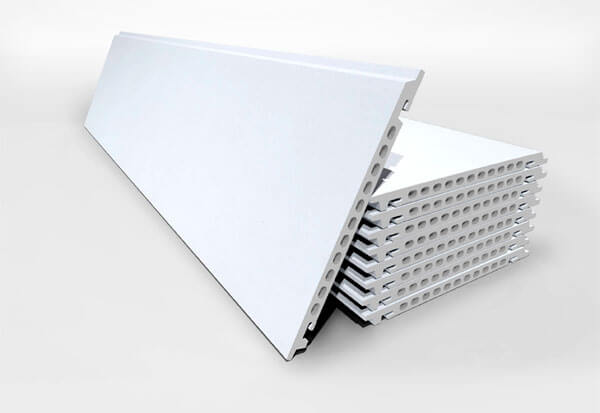
The esthetic advantages of porcelain tile for ventilated facades
There are so many esthetic possibilities with porcelain tile that it’s one of the most versatile materials for cladding. Thanks to all the technological progress made in manufacturing it and applying digital printing, it offers endless personalization options to adapt to any architectural style.
- Colors and textures: from neutral tones to bright colors, porcelain tile is available in a wide chromatic range. Plus, it can imitate textures like wood, stone and marble, offering a natural look with the benefits of a ceramic material.
- Formats and sizes: porcelain tile panels are manufactured in various formats from small to XXL, which makes it possible to create unique volumes and custom pieces that adapt to each individual project. Additionally, if you choose a machined alveolar piece produced by extrusion, the anchoring is hidden which enhances the look since the fixing elements are not visible.
- Personalized finishes: you can choose anything from a shiny finish to matte, textured or grainy, depending on the effect you’re looking for.
- Complex patterns: the ability to combine colors, textures and formats opens up a whole world of creative alternatives to design modern facades, or something more traditional or avant-garde.
This not only increases the esthetic possibilities, but also provides architects and designers with the freedom to experiment and express their creativity. A contemporary look for buildings when a facade cladding solution is sought that combines efficiency, sustainability, protection and an avant-garde look.
Transform your facade with porcelain tile: trust in the experts at FAVEKER®
Porcelain tile for outdoor facades is not only a high-end cladding option, it’s an integrated architectural solution that provides added value to any building in terms of efficiency, design and durability. Its resistance, esthetic versatility and compatibility with ventilated facade systems make it the ideal choice for those seeking performance without giving up on style.
If you’re planning a new architectural project or a facade renovation, preview the finish with our 3D viewer and contact our Technical Office: at FAVEKER®, we’re experts in ceramic ventilated facades and work with the latest in porcelain tile. Find out how to turn facades into architectural pieces of high esthetic and technical value.

